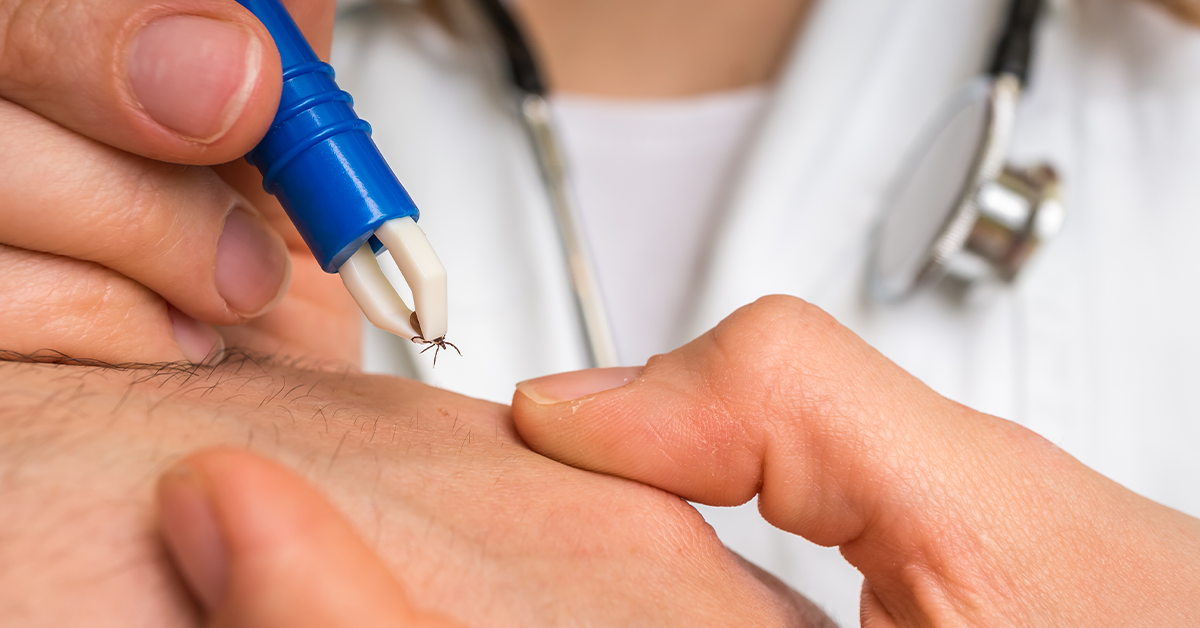Lyme disease is an infectious disease caused by the bacterium Borrelia burgdorferi and, in rare instances, Borrelia mayonii. These bacteria are transmitted to humans through the bite of infected blacklegged ticks, also known as deer ticks. These ticks become infected after feeding on infected animals such as deer, birds and mice.
Once a deer tick bites you, it must stay attached for 36 to 48 hours to transmit the bacteria. If you discover and remove the tick within 48 hours, you probably won’t get infected and develop Lyme disease. If you do get infected, the bacteria travel through your bloodstream and affect various organs and tissues in your body, causing a wide range of signs and symptoms.
Lyme disease signs and symptoms can appear anywhere from three to 30 days following the tick bite and vary depending on the stage of your infection. Some people don’t notice any signs or symptoms until months after they’ve been bitten. Early symptoms of Lyme disease resemble the flu and include:
• Fever
• Chills
• Headache
• Fatigue
• Sore throat
• Muscle and joint pain
• Swollen lymph nodes
One of the first signs of Lyme disease is a “bull’s-eye” rash at the site of the bite. The rash, formally called erythema migrans, typically appears as a red ring that surrounds a clear center area. It can range in size from that of a dime to the entire width of your back. The rash may be warm to the touch but is usually not painful or itchy. Erythema migrans occurs in approximately 70 to 80 percent of infected people.
If your Lyme disease isn’t treated early on, it can turn into an inflammatory condition that affects multiple systems, including your joints and nervous system and eventually many organs and tissues. Signs and symptoms of late-stage Lyme disease include:
• Severe headaches and neck stiffness
• Additional rashes on other areas of your body
• Arthritis with joint pain and swelling, particularly in your knees
• Sudden drooping on one or both sides of your face (Bell’s palsy)
• Heart palpitations or an irregular heartbeat (Lyme carditis)
• Inflammation of the membranes surrounding your brain and spinal cord (meningitis)
• Shooting pain, numbness or tingling in your hands and feet (neuropathy)
• Difficulty concentrating or short-term memory loss (encephalopathy)
See your doctor if you think you’ve been bitten by a deer tick, or if you have any of the signs and symptoms of Lyme disease. The doctor will examine you, review your medical history and symptoms, and likely order lab tests to look for antibodies against the Borrelia burgdorferi bacterium.
These lab tests can help confirm or rule out the diagnosis of Lyme disease. The tests are most reliable when performed a few weeks after infection, once your body’s immune system has had a chance to develop the antibodies.
Nearly all people with Lyme disease can be successfully treated with a course of oral or intravenous (IV) antibiotics. The type and duration of antibiotic treatment depends on the stage of the infection and the extent of your symptoms.
Unfortunately, about 10 percent of people treated for Lyme disease don’t shake it and go on to develop post-treatment Lyme disease syndrome. The main symptoms of this syndrome are lingering joint or muscle pain, fatigue, and short-term memory loss or confusion. This condition does not signify ongoing infection and will not respond to additional antibiotics. However, most people with this syndrome will experience symptom relief within six months of diagnosis.
You can decrease your risk of getting Lyme disease by taking some simple precautions:
• Avoid areas where ticks live, especially wooded, bushy areas with long grass.
• When in those areas, wear shoes, long pants tucked into your socks, a long-sleeved shirt, a hat and gloves. Stick to trails and avoid walking through low bushes and long grass. Keep your dog on a leash.
• Make your yard unfriendly to ticks. Clear wooded areas, keep underbrush to a minimum and put woodpiles in areas that get a lot of sun, which repels ticks.
• Apply insect repellant with a 20 percent or higher concentration of DEET to your skin. Apply the repellant to your children’s skin as well, but be sure to avoid their hands, eyes and mouth.
• After you’ve spent time outdoors, check yourself, your children and your pets for ticks. Deer ticks are about the size of the head of a pin, so you must search carefully to find them.
• If you discover a tick, remove it with tweezers. Gently grasp the tick near its head or mouth. Don’t squeeze or crush it but pull it carefully and steadily. After you’ve removed the tick, apply antiseptic to the bite area. Put the tick in alcohol or flush it down the toilet.





Leave a Reply